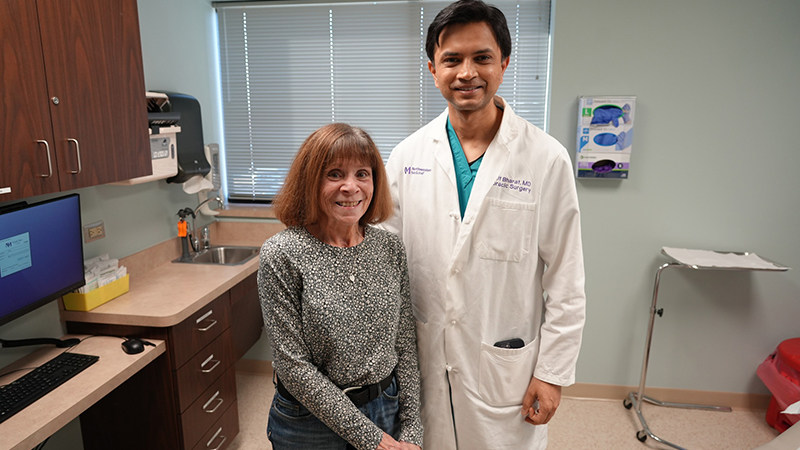What Is Spinal Muscular Atrophy?
Published August 2020
The Future Ahead
Spinal muscular atrophy (SMA) is a rare genetic disease affecting the central nervous system, peripheral nervous system and voluntary muscle movement. This debilitating neuromuscular condition causes individuals to slowly lose the ability to walk, eat and breathe.
Individuals with SMA have a genetic defect that limits production of a protein that neurons depend on for muscle control. Without the proper level of this protein, motor neurons in the spinal cord are lost over time. When this happens, the brain has no way to “talk” to the body’s mucles and tell them what to do. Eventually, this can lead to atrophy, or progressive muscle weakness or wasting.
There are four different types of SMA:
- Type 1: Werdnig-Hoffmann SMA. Also called infantile-onset SMA, this type often causes symptoms just after birth. An infant may have trouble moving, swallowing and feeding. The infant may not be able to hold up their head.
- Type 2: Juvenile or chronic SMA. A child with this type is often diagnosed between age 6 months and 18 months. The main symptom is muscle weakness all over the body. This causes trouble walking and standing.
- Type 3. Sometimes called Kugelberg-Welander disease, the most common symptoms of this type of SMA include clumsiness, trouble walking and climbing steps, fine tremor and muscle weakness.
- Type 4. This is characterized as a mild disease and found in less than 5% of cases. Age of onset is not clearly defined although some experts suggest onset occurs in the third decade of life. People with Type 4 reach all major motor milestones and have a normal lifespan.
SMA Treatment
Traditional treatment focuses on providing supportive measures, like addressing respiratory concerns and other issues that may arise in order to help keep individuals mobile as long as possible. But in recent years, new treatments include a gene therapy that helps the body produce functional protein and as a result, helps to prevent deterioration of motor functions. One of the treatments is a medication injected into spinal fluid in the lower back.
Some patients with SMA may have already had back surgery, have scoliosis, or are in a wheelchair with respiratory muscle weakness or failure. Therefore, a team approach to treatment is necessary for safety and to help achieve the best outcomes possible.
“These patients have multiple needs, and their care requires very close coordination and collaborative work of a team,” says Senda Ajroud-Driss, MD, neurologist at the Northwestern Medicine Neuromuscular Program.
A Promising Future
SMA research was traditionally only conducted on pediatric patients because Type 1 is the most severe form of SMA and is the leading genetic cause of infant mortality. Patients advocated for a wider spread of the therapy in the adult population.
Today, specialists in the Northwestern Medicine Neuromuscular Program continue to explore ways to better measure outcomes for adult patients, which may lead the way for new clinical trials.
We’ve been talking about gene therapy for years, and now we are living it.— Senda Ajroud-Driss, MD
“We’ve been talking about gene therapy for years, and now we are living it. It is the beginning of an era that is transforming the world of neurogenetic disease, among others,” Dr. Ajroud-Driss says. “This propels the disease research forward and helps develop new outcome measures that could benefit the SMA world as a whole.”






